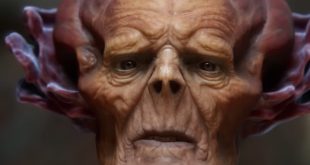Wasteland 2, the long-awaited sequel to the game that inspired the Fallout series, is one of the most high-profile examples of Kickstarter success. With the game now finally available, we spoke to developer inXile Entertainment to find out more about the tech behind this hotly-anticipated title.
Given the size and scope of the game, the most crucial decision was which engine the team would use. In fact, project lead Chris Keenan says this was the first step after the Kickstarter campaign reached its target – and he says it came down to two choices.
“After some initial examination, we narrowed it down to Unreal and Unity,” he says. “InXile had used Unreal for many years prior, but we also had a quarter of the team size we did during that period. While you can do some amazing things with Unreal, we felt that it would have been overkill.
“At the time, there weren’t any large PC games being developed on Unity so there was a bit of risk, but after a tech evaluation, we felt it would hold up to what our team threw at it.”
ASSET BONANZA
One of the things that swung the decision was Unity’s Asset Store, which Keenan says gave the team a huge advantage: “We could hit the ground running, purchasing assets in bulk that would allow our team to start prototyping immediately. We’re a very iterative company so getting features into code and testing them out was our number one objective.”
The store also helped inXile get their many enthusiastic backers involved. Working with the team at Unity, the studio experimented with crowd-sourced assets.
“We created a style guide, posted it up on our website and had some members of the team working with the community for those who wanted to contribute assets to the game,” explains Keenan. “The community got to keep the rights to their work, got a credit in the game, we would pay them for their creation, and they could sell it on.
Keenan urges new Unity devs to explore the store rather than spending pre-production time on making their own assets – in fact, inXile saved $200,000 in its first few months by doing so.
But Wasteland 2’s development wasn’t entirely dependent on art and visual assets. To hold true to the original game and its legacy, the team knew the written word was just as important.
“Even in some of the most amazing looking games, there are still elements the player won’t be able to experience without that textual world description describing all of the senses,” says Keenan. “We knew we weren’t going to have 50 artists on the project and wanted to use text to fill out the world as much as possible.
“Another focus of ours was with the UI. Games that came from the Infinity Engine and the early Fallout games had a very specific look to the UI. We knew we could achieve this while improving the user experience as many modern games do.”
COMMUNITY COLLABORATION
Keenan’s final advice is for new devs to look for support from the hordes of established Unity users already out there.
“Google will be your best friend,” he says. “Many other developers have likely faced the same problems you’re having. There is almost always a post somewhere about the exact same problem.
“Overall, the best piece of advice is to try not to be too closed off in your development. Technology has changed to the point where there are many ways to interact with the crowd that weren’t possible before. The development of Wasteland 2 has undeniably been better off for it.” ′

 MCV/DEVELOP News, events, research and jobs from the games industry
MCV/DEVELOP News, events, research and jobs from the games industry



